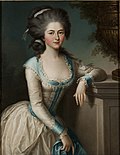Princess of Carignano
de facto
| Picture | Name | Father | Birth | Marriage | Became Princess | Ceased to be Princess | Death | Spouse |
|---|---|---|---|---|---|---|---|---|
 | Marie de Bourbon, Countess of Soissons | Charles, Count of Soissons (Bourbon) | 3 March 1606 | 6 January 1625 | 22 January 1656 husband's death | 3 June 1692 | Thomas Francis | |
 | Maria Angela Caterina d'Este | Borso d'Este (Este) | 1 March 1656 | 7 November 1684 | 23 April 1709 husband's death | 16 July 1722 | Emmanuel Philibert | |
 | Maria Vittoria of Savoy , Marchesa di Susa | Victor Amadeus II of Sardinia (Savoy) | 10 February 1690 | 7 November 1714 | 4 April 1741 husband's death | 8 July 1766 | Victor Amadeus I | |
 | Christine of Hesse-Rotenburg | Ernest Leopold, Landgrave of Hesse-Rotenburg (Hesse-Rotenburg) | 21 November 1717 | 4 May 1740 | 4 April 1741 husband's accession | 1 September 1778 | Louis Victor | |
 | Joséphine of Lorraine | Louis Charles de Lorraine, Prince of Lambesc (Lorraine) | 26 August 1753 | 18 October 1768 | 16 December 1778 husband's accession | September 1780 husband's death | 8 February 1797 | Victor Amadeus II |
 | Maria Christina of Saxony | Charles of Saxony, Duke of Courland (Wettin) | 7 December 1770 | 24 October 1797 | 16 August 1800 husband's death | 24 November 1851 | Charles Emmanuel | |
 | Archduchess Maria Theresa of Austria | Ferdinand III, Grand Duke of Tuscany (Habsburg-Lorraine) | 21 March 1801 | 30 September 1817 | 27 April 1831 becomes Queen | 12 January 1855 | Charles Albert | |
de jure
As noted, the Principality was bought by Louis Jean Marie de Bourbon; as such the title was born by his Modenese wife; at his death to passed to his daughter by inheritance. The title was confiscated off Marie Adélaïde during the French Revolution.
| Picture | Name | Father | Birth | Marriage | Became Princess | Ceased to be Princess | Death | Spouse |
|---|---|---|---|---|---|---|---|---|
 | Maria Teresa Felicitas d'Este | Francesco III d'Este, Duke of Modena (Este) | 6 October 1726 | 29 December 1744 | 1751 | 30 April 1754 | Louis Jean Marie de Bourbon, Duke of Penthièvre | |
 | Louise Marie Adélaïde de Bourbon Mademoiselle de Penthièvre | Louis Jean Marie de Bourbon, Duke of Penthièvre (Bourbon) | 13 March 1753 | 8 May 1768 | 4 March 1793 father's death | 1793 confiscated by French Republic | 23 June 1821 | Philippe d'Orléans, Philippe Égalité |